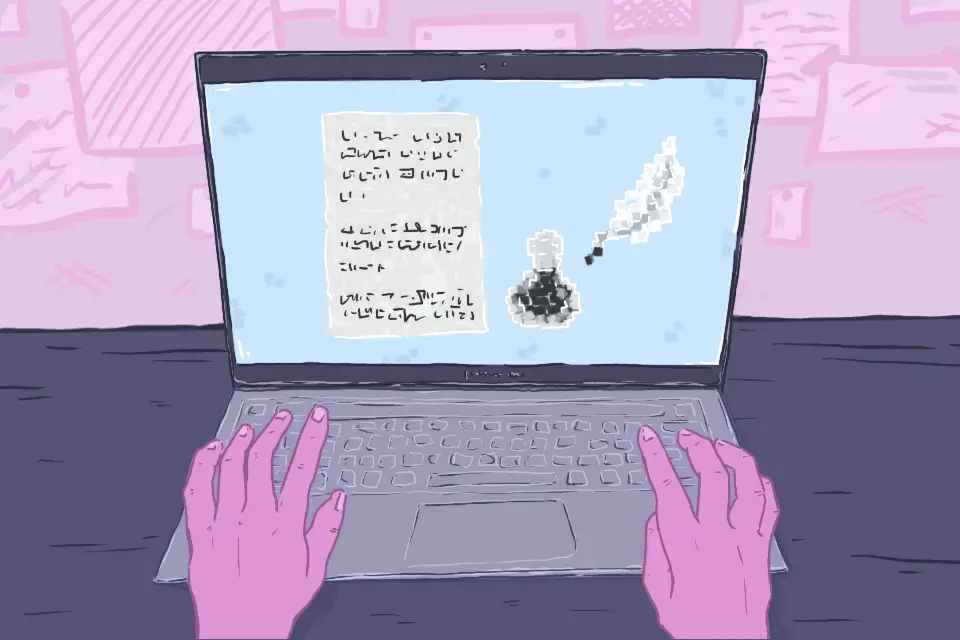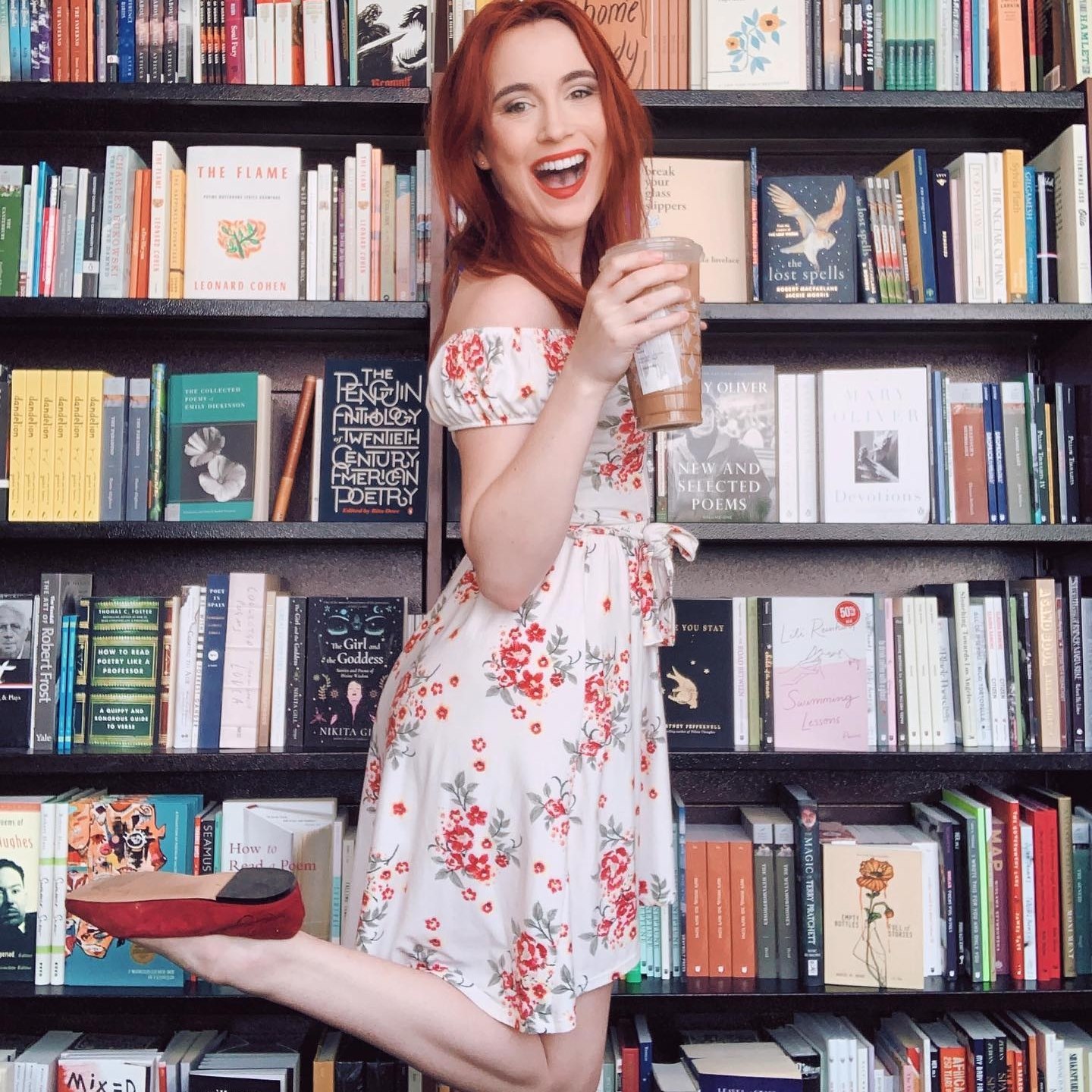Poetry has found a renewed existence in the digital space. This resurgence has marked a democratization of the art form, transcending the confines of traditional academic circles. In stark contrast to the American education system’s emphasis on classic poets such as Poe, Whitman, Frost and Emerson, contemporary poetry has flourished in the dynamic realm of social media. Modern poetry encompasses specific forms built around the concept of Free Verse (unlike the more rigid Sonnet or Villanelle) that have gained prominence online. Social media platforms serve as powerful conduits for established and emerging poets, fostering a more accessible and diverse literary space.
As technology evolves, so does the way we consume and engage with art. The rise of social media platforms has provided poets with unprecedented opportunities to connect with audiences globally. One notable form that has gained immense popularity is “Instapoetry.” This genre involves concise, often minimalist verses that are easily digestible for the scrolling reader. Poets like Rupi Kaur and Lang Leav have become household names, leveraging platforms like Instagram to share their work. Kaur’s “Milk and Honey” and Leav’s “Love & Misadventure” are prime examples of how these poets have used social media to catapult their careers and redefine the modern poetry category.
Instapoetry is not merely a passing trend; its influence extends beyond the online community. These poets have managed to reach demographics that may not have engaged with poetry otherwise, breaking down barriers traditionally associated with the genre. It transcends levels of education while also “translating” poetic language into something more digestible. The brevity and accessibility of Instapoetry make it particularly well suited for the fast-paced nature of social media consumption.
View this post on Instagram
One of the most significant impacts of social media on contemporary poetry is the diversification of voices. Traditionally, the canon of American poetry has been dominated by a select few, primarily white male poets. However, the digital age has allowed for the obtainability of literary spaces, giving voice to individuals from diverse backgrounds.
TikTok poet Emily Juniper accomplishes this by immortalizing requited Lesbian love within her poetry. The viral poetry collection, Coming Home to Her includes short form poems that intricately depict a heartwarming side to the Lesbian experience, sexual journey, and femininity.
@by.emilyjuniper For all the gaés who spent their lives heteronormative.. 🏳️🌈 #latebloominglesbian #fyp #wlw #lesbiansoftiktok #poetry #booktok #FordMaverick ♬ Cigarette Daydreams – Cage The Elephant
Platforms like X, with its character limit, have encouraged poets to distill their thoughts into concise, impactful verses. This has given rise to the phenomenon of “micropoetry.” Poets like Nayyirah Waheed have harnessed the brevity of X to share poignant pieces that resonate with a wide audience. Waheed’s work often explores themes of identity, race and womanhood, offering a fresh perspective that may not have been as readily accessible in traditional poetry circles.
— Nayyirah Waheed, salt pic.twitter.com/rdbjowXtk0
— Synexdoche (@amor_fatti) February 26, 2024
Moreover, the digital age has facilitated the creation of virtual collectives where poets can engage with one another. Online platforms, such as Reddit’s poetry communities or Facebook groups dedicated to specific poetic forms, provide a space for poets to share their work, receive feedback and connect with like-minded individuals.
Contemporary poetry on social media has also challenged and subverted traditional notions of form and structure. Poets are no longer confined to strict rhyme schemes and meter. Instead, they experiment with free verse, unconventional line breaks and multimedia elements to convey their messages.
View this post on Instagram
One striking example is the emergence of “spoken word poetry” on platforms like YouTube and TikTok. Poets such as Sarah Kay and Rudy Francisco utilize the audio-visual medium to enhance the impact of their performances. The visceral nature of spoken word allows poets to deliver their verses with impactful feelings, adding an extra layer of depth to the overall experience. This form of poetry has become a powerful medium for addressing social issues, personal narratives and emotional expression.
In her poem “Perfect,” poet Maia Mayor encapsulates the concept of painting poems through performance. By combining the experience of familial relationships, battles with perfectionism within the self, the wounds left by words and the heartbreaking realities of living for others, she prompts listeners to feel the words in their gut.
As one commenter says, “The way she spits out her own name like it’s a bad word. That hits hard.” Another adds on, “When the poem started I was like ‘this sounds like my mom’ and I was laughing a little but then it went on and on and at the end I was crying and saying ‘this sounds like my mom.”
While the online world has undeniably opened new doors for poets, it has not been without its share of criticisms and controversies. Detractors argue that the brevity encouraged by social media platforms may lead to a lack of depth in poetic expression. Critics also question the commercialization of poetry, as poets strive for virality and mass appeal. Poet Rebecca Watts asserts that “of all the literary forms, we might have predicted that poetry had the best chance of escaping social media’s dumbing effect.” Concerns have been raised about the potential for plagiarism and the devaluation of the art form when shared in bite-sized increments. However, supporters counter that these platforms provide a gateway for individuals to discover a love for poetry, and those interested in exploring deeper themes can seek out longer-form works.
In today’s society, poetry has evolved beyond the confines of dusty tomes and lecture halls. Social media has emerged as a powerful entryway and platform, democratizing poetry and offering a space for diverse voices to be heard. From the succinct verses of Instapoetry to the dynamic performances of spoken word poetry, contemporary poets are reshaping the bones of an ancient art form. As we navigate this digital renaissance, it is essential to recognize and celebrate the myriad ways in which poetry continues to captivate, inspire and challenge us in the ever-evolving world of social media.

















